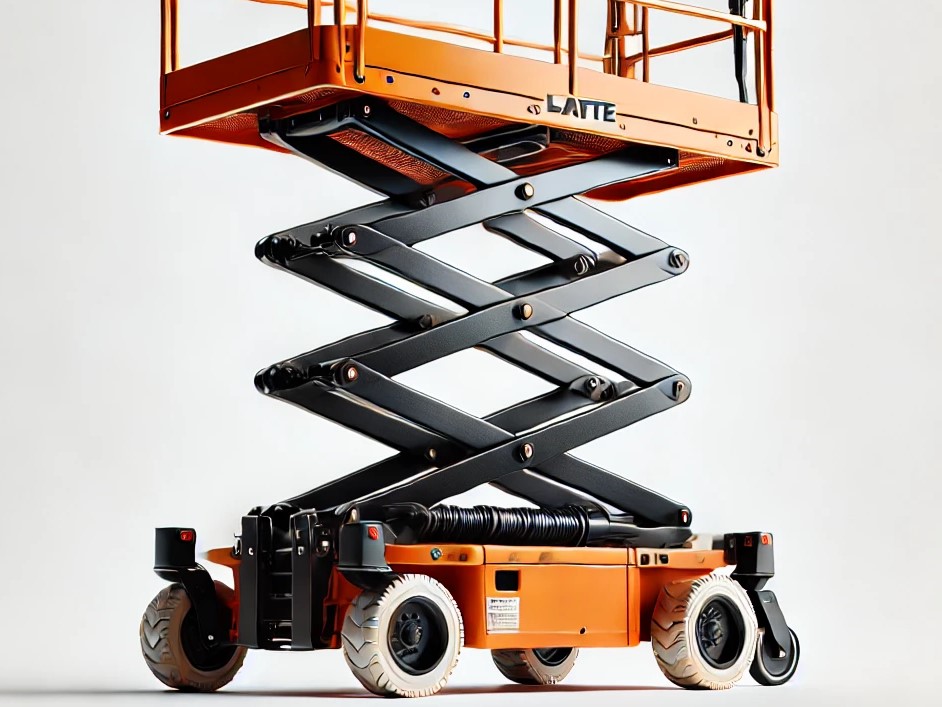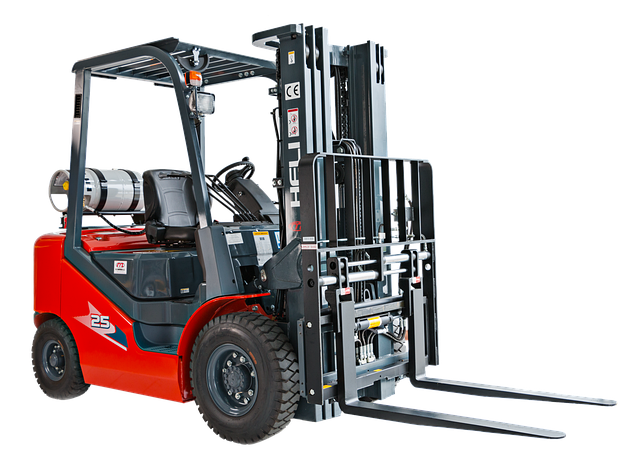Industrial Hydraulic Lifts: Powering Efficiency and Safety in Modern Workplaces
Industrial hydraulic lifts are essential tools in modern workplaces, offering reliable and efficient solutions for lifting heavy loads with precision and safety. By harnessing the power of hydraulic systems, these lifts reduce manual labor, increase productivity, and minimize the risk of workplace injuries. From manufacturing plants to warehouses, industrial hydraulic lifts streamline operations and provide the strength and stability needed to handle demanding lifting tasks with ease.

How Hydraulic Lifts Work: The Science Behind the Power
Hydraulic lifts operate on Pascal’s principle, which states that pressure exerted on a fluid in a confined space is transmitted equally in all directions. In practical terms, this allows a relatively small input force to generate a much larger output force. The system consists of several key components working in harmony: a reservoir containing hydraulic fluid (typically oil), a pump that pressurizes the fluid, valves that control the fluid flow, and cylinders with pistons that convert fluid pressure into mechanical force.
When the pump activates, it forces fluid from the reservoir through valves into the cylinders. As fluid enters the cylinder, it pushes against the piston, extending it and creating the lifting motion. The mechanical advantage comes from the difference in surface area between the input piston (typically smaller) and the output piston (larger). A small force applied to a small piston creates pressure that, when transferred to a larger piston, generates significantly more force. This multiplication of force allows hydraulic lifts to raise loads many times heavier than would be possible with direct mechanical methods.
The system includes safety features like pressure relief valves to prevent overloading, check valves to maintain position even if power is lost, and flow control valves that regulate lift speed. Modern hydraulic systems also incorporate electronic controls that enable precise positioning, automatic leveling, and programmable movement patterns.
Key Benefits of Industrial Hydraulic Lifts
Industrial hydraulic lifts deliver numerous advantages that make them essential equipment in many workplaces. Their exceptional strength-to-size ratio allows them to lift tremendous loads while occupying minimal floor space. Unlike mechanical or pneumatic alternatives, hydraulic systems can generate consistent force throughout their entire range of motion, providing smooth operation regardless of load position.
Safety represents another critical benefit. Hydraulic lifts incorporate multiple redundant safety systems, including overload protection, emergency descent mechanisms, and automatic locking features. These safeguards protect both operators and materials during lifting operations. Additionally, by eliminating the need for manual lifting, these systems significantly reduce workplace injuries related to strain, falls, and crushing incidents.
Maintenance requirements for hydraulic lifts tend to be straightforward compared to other lifting technologies. With fewer moving parts than mechanical alternatives and no electrical components in basic models, routine maintenance primarily involves checking fluid levels, inspecting for leaks, and occasionally replacing seals. This simplicity translates to less downtime and lower ownership costs over the equipment’s lifecycle.
Energy efficiency is another advantage, as hydraulic systems only consume power during active lifting operations. Once a load is raised, the system maintains position with minimal energy expenditure. This characteristic makes hydraulic lifts particularly economical in applications requiring frequent load positioning but extended holding periods.
Applications Across Industries: From Manufacturing to Warehousing
Manufacturing facilities employ hydraulic lifts in numerous capacities, from positioning workpieces during assembly to loading finished products onto delivery vehicles. Assembly lines often feature hydraulic work platforms that adjust to optimal working heights, reducing worker fatigue and improving ergonomics. In industries producing large components like aerospace or automotive manufacturing, specialized hydraulic lifts enable precise positioning of heavy assemblies during production phases.
Warehousing operations rely heavily on hydraulic technology. Hydraulic pallet jacks, stackers, and order pickers facilitate efficient material handling throughout storage facilities. Dock levelers—essential for smooth transitions between warehouses and delivery vehicles—utilize hydraulic systems to accommodate varying truck heights. High-density storage systems often incorporate hydraulic mechanisms to maximize vertical storage capacity, allowing facilities to store more inventory within limited floor space.
Construction and maintenance industries benefit from mobile hydraulic lift platforms that provide safe access to elevated work areas. These aerial work platforms range from compact scissor lifts for indoor maintenance to extensive boom lifts that can reach several stories high. The transportation sector uses hydraulic lifts for vehicle maintenance, loading/unloading operations, and accessibility accommodations for passengers with mobility limitations.
Healthcare facilities implement hydraulic patient lifts to safely transfer individuals between beds, wheelchairs, and treatment areas. These specialized applications demonstrate how hydraulic lifting principles extend beyond traditional industrial settings to improve safety in sensitive environments.
Cost Considerations for Industrial Hydraulic Lifts
Investment in hydraulic lift equipment varies considerably based on capacity, features, and application. Basic hydraulic pallet jacks may cost between $300-$1,000, while industrial-grade scissor lifts typically range from $3,000-$15,000 depending on capacity and lift height. Specialized equipment like vehicle lifts for automotive maintenance can range from $2,500 for light-duty models to over $50,000 for heavy-duty truck lifts with advanced features.
The table below provides comparative pricing for common hydraulic lift categories:
| Lift Type | Capacity Range | Average Price Range | Key Features |
|---|---|---|---|
| Hydraulic Pallet Jack | 2,500-5,500 lbs | $300-$1,000 | Manual operation, compact design |
| Scissor Lift Table | 1,000-10,000 lbs | $3,000-$15,000 | Adjustable height, stationary operation |
| Vehicle Lift | 7,000-30,000 lbs | $2,500-$50,000+ | Specialized for automotive maintenance |
| Aerial Work Platform | 500-1,000 lbs | $10,000-$100,000+ | Mobile, extendable height |
| Custom Industrial Lift | 5,000-100,000+ lbs | $25,000-$200,000+ | Application-specific design |
Prices, rates, or cost estimates mentioned in this article are based on the latest available information but may change over time. Independent research is advised before making financial decisions.
Beyond initial purchase costs, operators should consider ongoing expenses including installation, maintenance, operator training, and energy consumption. While hydraulic systems typically offer lower maintenance costs than mechanical alternatives, they do require periodic fluid replacement and seal maintenance. Facilities should also factor in potential downtime during maintenance when calculating total ownership costs.
Technological Advancements in Hydraulic Lift Systems
Modern hydraulic lifts incorporate numerous technological improvements that enhance their functionality and safety. Integration with digital controls allows for programmable operation sequences, remote monitoring capabilities, and precise positioning accuracy. These smart systems can track usage patterns, predict maintenance needs, and automatically adjust operating parameters based on load conditions.
Environmental considerations have driven development of more sustainable hydraulic systems. Bio-based hydraulic fluids offer reduced environmental impact compared to traditional petroleum-based options. Energy recovery systems capture and reuse energy during descent operations, improving efficiency in applications with frequent raising and lowering cycles. Manufacturers continue developing quieter pumps and power units to reduce noise pollution in workplace environments.
The future of hydraulic lift technology points toward further integration with workplace automation systems. As manufacturing and warehousing operations embrace Industry 4.0 principles, hydraulic lifts will increasingly communicate with other equipment, optimizing material flow and workplace efficiency while maintaining their fundamental role in powering the heavy lifting that keeps modern industry moving.




